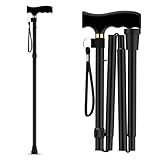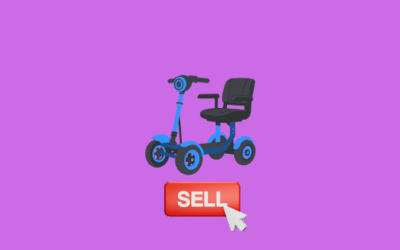Key Takeaways For How To Use A Walking Stick Correctly
Adjusting Height for Comfort: When standing tall, ensure your walking stick’s handle rests slightly above your hips. This distributes weight evenly and reduces joint stress for a comfortable and secure walk.
Proper Grip Technique: Hold the walking stick with fingers, not palms, gripping the handle with the thumb on top and fingers wrapped around for a secure hold and improved balance.
Effective Usage in Various Situations: Hold the walking stick on the side opposite to the affected body part while walking, use it for added stability when climbing stairs or inclines, and lean on it when sitting or standing to maintain balance and reduce strain on joints.
Top Walking Sticks
Walking sticks designed specifically for the elderly to aid their stability and movement when walking might be a great investment. Here’s how to use a walking stick correctly.
Canes, or walking sticks, are helpful mobility aid and support device. They enable people with various ailments to maintain balance, lessen pain and suffering, and boost their autonomy. This article will cover the proper and efficient usage of a walking stick.
Adjusting the Height of Your Walking Stick
The first thing you should do when picking up a walking stick is to tweak the height until it feels comfortable. When standing tall, the handle of your walking stick should rest slightly above your hips. The weight will be distributed evenly, easing stress on the body’s joints and making you less prone to injury should you stumble.
Holding the Walking Stick
Hold the walking stick firmly but not too tightly. The handle should be grasped with fingers, not palms. Hold the handle with your thumb on top and your fingers wrapped around it. You’ll have a secure grip and improved balance.
Using the Walking Stick When Walking
It would be best to hold the walking stick on the side of the unaffected body while walking. For instance, if you’re using a cane because you hurt your left leg, you should hold it in your right hand. It will assist you in maintaining your equilibrium while relieving strain on your injured leg.
Climbing Stairs and Inclines
Use your walking stick’s added stability while climbing steep inclines or stairs. To help you get up, hold the cane in the hand that isn’t supporting your weight. Hold the cane in your left hand while you rise onto your right foot, and vice versa.
Sitting and Getting Up
If you need help sitting or standing, just lean on your walking stick. Keep the cane at the chair’s side to help you sit down and stand up. Having your load dispersed evenly means less strain on your joints and a reduced risk of harm in the event of a fall.
Proper Maintenance
Ensure your walking stick is in good working order by regularly maintaining it. Cracks, loose screws, and frayed rubber tips are all symptoms of deterioration and should be checked routinely. It’s important to replace any components that have been damaged or worn promptly.
Summary Of How To Use A Walking Stick
Your doctor may prescribe a walking stick to help you go about or keep you safe. Adjusting the height of your walking stick, finding the right grip, and using it while you walk, climb stairs, stand up, and maintain it regularly may help you get the most out of it. Get the OK from a doctor who knows your health well before you start using a walking stick.
Best Selling Walking Sticks
Related Walking Stick Usage and Selection Articles
- Walking Stick Buying Guide – A comprehensive guide to choosing the right walking stick.
- Best Walking Sticks for Balance – Discover walking sticks designed to improve stability and balance.
- Difference Between 3-Leg and 4-Leg Walking Sticks – Learn the pros and cons of different walking stick types.
- Walking Stick Accessories – Enhance your walking stick experience with useful accessories.













